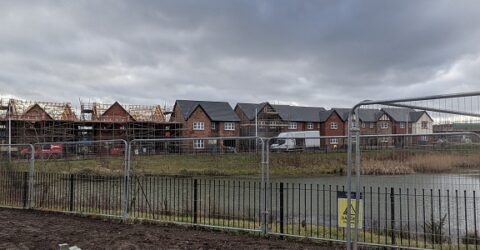Gigabit broadband now available in over 99% of new homes
New home gigabit broadband availability means top speeds and reliability, but some regions are left behind.

If a week is a long time in politics, and recent events certainly suggest it is, three years might seem an eternity in terms of broadband rollout.
Yet high speed internet provision is surprisingly hard to accomplish.
We recently reported on the shambolic attempts at delivering superfast internet services to every home in Scotland, through the R100 broadband scheme.
Originally slated for completion by 2021, the Scottish Government finally admitted in response to a Freedom of Information request last year that the new deadline would be at least 2028.
In fairness, cabling a remote Hebridean bothy is very different to servicing a mainland new-build estate where other essential infrastructure is being added simultaneously.
Dropping a fibre broadband cable into ready-dug trenches is easier and more cost-effective than retrofitting it under old pavements, especially in sparsely populated rural regions.
That’s why the UK is very close to achieving something remarkable – near-universal new home gigabit broadband coverage…
Getting the gig(abit)
Back in 2013, a new housing development in Carlisle became the first in the UK to offer 1Gbps internet connectivity to its residents.
A decade later, the exception has become the norm.
Data collated last November suggested that just over 99 per cent of new-build dwellings across the UK now have access to gigabit broadband services.
However, figures varied considerably across the country. In north west England, new home gigabit broadband provision stood at 99.55 per cent.
By contrast, Northern Ireland’s figure was 97 per cent, while Wales didn’t even break the 95 per cent mark.
This is partly due to the fact that building regulations and broadband provision are devolved issues.
The Welsh Government is now consulting on ensuring all new-build homes are equipped with gigabit-capable connections, which would belatedly bring it into line with England.
However, whether you’re buying a new home in London, Llandudno or Lanark, it’s already reasonable to expect gigabit-standard connectivity to be offered from the day you move in.
So does every new build home need to pay for gigabit broadband?
Absolutely not.
It might sound appealing in sales brochures, but there are plenty of reasons why households might not want or need new home gigabit broadband:
- People could choose a slower Openreach-powered service over full fibre broadband if they don’t know, like or trust the alternative provider.
- Equally, consumers who are happy with their existing ISP may opt to transfer their package to their new address, especially mid-contract when exit penalties might apply.
- The cost of gigabit internet could seem unnecessarily high if a slower connection speed is sufficient for a household’s needs.
- Rival ISPs might offer features more valuable than speed, such as compatibility with Ethernet-equipped media plates, or mesh networks capable of covering a large dwelling.
There’s no penalty incurred if you have a 1Gbps connection in your home yet choose not to utilise it.
These full fibre connections will remain dormant until they’re required. They won’t spoil or wear out, and it’ll be many years before they fall behind the technological times.
Back in 2013, those Carlisle house buyers would have found it difficult to use all their available bandwidth without resorting to peer-to-peer file sharing or cryptocurrency mining.
Even today, few households would appreciate the benefits of a 1Gbps line compared to a 500Mbps connection, for instance.
Gigabit line speeds should ensure it’ll be many years before today’s new homes are unable to cope with evolving bandwidth requirements.






